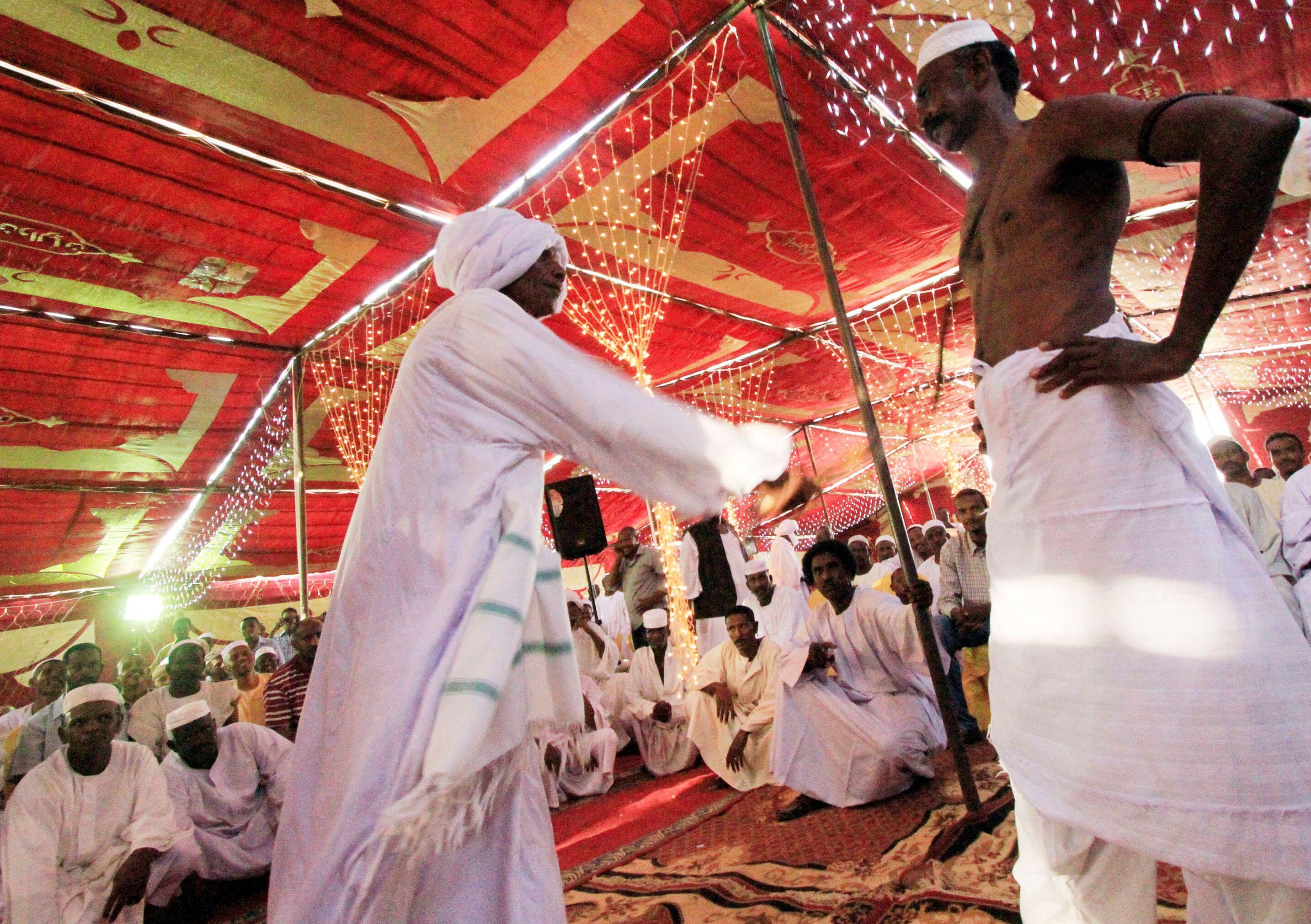The Sudanese tradition of whipping in wedding ceremonies stands the test of time
Whipping is a source of pride and competition for young people in ceremonies

Your support helps us to tell the story
From reproductive rights to climate change to Big Tech, The Independent is on the ground when the story is developing. Whether it's investigating the financials of Elon Musk's pro-Trump PAC or producing our latest documentary, 'The A Word', which shines a light on the American women fighting for reproductive rights, we know how important it is to parse out the facts from the messaging.
At such a critical moment in US history, we need reporters on the ground. Your donation allows us to keep sending journalists to speak to both sides of the story.
The Independent is trusted by Americans across the entire political spectrum. And unlike many other quality news outlets, we choose not to lock Americans out of our reporting and analysis with paywalls. We believe quality journalism should be available to everyone, paid for by those who can afford it.
Your support makes all the difference.This article first appeared on our partner site, Independent Arabia
Many wedding ceremonies in different countries have different traditions. In Sudan, it is whipping. Known locally as ‘Al-Potan’, it is a traditional and customary practice for some Arab tribes, notably the Ja'alin in the north of the country to maintain the tradition at weddings.
People believe that being whipped with a lash is a way to show a man’s chivalry, patience, endurance and courage. Owing in large part to the Ja'alin’s influence, lashing has significantly spread to all cities and towns in Sudan.
In fact, whipping young men has now become a fundamental part of all kinds of celebrations.
Traditionally, friends of the groom line up side by side, each resting on a rod and in a position to be lashed on their bare backs, either to demonstrate their appreciation to the groom or to pay an old lashing debt.
‘Al-Potan’ is not without pain, blood and difficulty. But there is no room in it for tears, movement or shaking. That is why every young man ensures maximum stability and no blinking even when the whip gets into his back and shoulders, regardless of the pain or bleeding.
No one is quite sure when it first started, but many assume that it goes back to the 1930s and 1940s, although some studies point back to a tradition much further back.
A member of the civil court and an elder of the Ja'alin tribe in El Matamma in the state of River Nile, Sheikh Mouktar Salem says that ‘Al-Potan’ represents the cultural heritage of the region’s population.
Speaking to Independent Arabia, Salem said: “To us, whipping means patience and chivalry and we have chosen the lash as an instrument of execution, as it is safer, more hurtful and quite different from the rod which can cause death or serious harm.
"As far as the lash is concerned, it is made out of tar-infused animal skin to give it flexibility and a painful sting. It should be of a particular length so it will not crack while whipping. Its decorated handle makes it unique as compared to the ordinary lash used by shepherds. Previously, there was a category of people known as executioners. They were specialised in whipping during wedding ceremonies, and they had to know all about how and where to whip without causing harm or a disability”.
He added: “In the past, whipping was harsher and more painful. It was not confined to the shoulders and back as it is these days. There are many different types of whipping. There is honorific whipping, courtesy of the groom in weddings; intimidation whipping, which takes place between two people until one of them surrenders; revenge whipping between whoever has a lashing debt to another; and finally, the competitive whipping to support the pursuit of excellence and win admiration, and that’s what normally happens in wedding ceremonies with the aim of catching a girl’s eye”, says Salem.
Today’s generation has different perceptions of whipping. According to university student Husam Farouk, ‘Al-Potan’ is a sign of underdevelopment, as it relies on strength and physical endurance to demonstrate confidence and chivalry. In his opinion, strength does not depend only on muscles and muscles are definitely not the only thing that can shape a man’s personality and social image. Besides, he notes how lashing is no longer accepted by courts as a criminal sentence, and is in conflict with human rights principles.
As for Afifi Ahmad, a member of the Ja'alin tribe, the opposite is true. He sees the tradition of whipping as a source of pride.
According to Abbas Ahmad Al Hajj, a researcher in Sudanese cultural heritage, ‘Al-Potan’ is a tradition and a heritage that is linked to preparations for war, as well as raising strong and proud generations that do not fear pain.
Edited and proofread by Tooba Ali & Celine Assaf



Join our commenting forum
Join thought-provoking conversations, follow other Independent readers and see their replies
Comments